DC fast charging is all the rage. Automakers use theoretical DC fast charging on a very high kW (kilowatt) charger to describe just how quickly charging could be. For example, Hyundai says in its new Ioniq 5 marketing materials, “...best-in-class ultra-fast charging from 10 to 80 percent in just 18 minutes.” The charging that this Hyundai example refers to would be charging done on a DC fast charger with a capability of providing 350 kW. Most DC fast chargers (DCFCs) provide charging at less than one-sixth of that rating.
Related Topic: 3 Reasons Charging At Home Is a Must For Electric Vehicle Owners
For a deep dive on the fastest-possible DC Fast charging available now we suggest checking out this deep dive by Mark Kane at Inside EVs. This story from Tom Moloughney using data from Alex Dykes is also a great resource on DC fast charging.
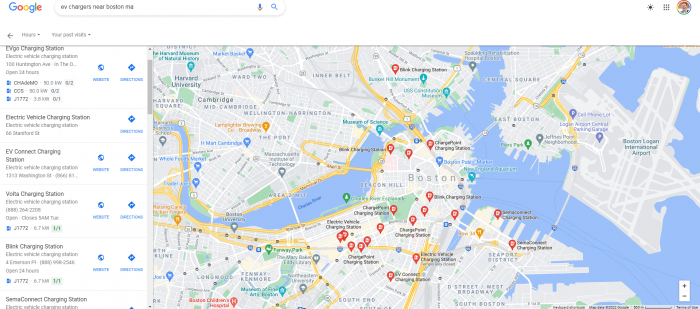
Today's DC Fast Charger Network - Mostly "Slow" 50 kW
We’ll explain why DC fast chargers are not all created equal, but first, a reality check. None of the DC Fast Chargers around Downtown Boston we could find, nor ones in the pricey suburbs North of Boston, nor any in downtown Concord New Hampshire could achieve even a 150 kW rate of charge. And let’s remember that Massachusetts has about triple the EV chargers per registered EV that California does. It’s one of the states with the highest EV charger densities in America and a strong state supporter of EV adoption.
Related Story: Charging an Electric Vehicle In Public Can Cost Triple What Fueling Up a “Gas-Guzzler” Does
What Is DC Fast Charging and What is Level 2?
DC fast charging is a speedier way for some EVs to charge. Rather than messing around converting AC power to DC power, it mainlines the DC power right into the car. Not all EVs are capable of using a DC Fast charger. Some older Chevy Bolts, all RAV4 Primes, and many other popular EV models don’t have the ability to connect to them. However, that is changing. Most new battery-electric vehicles will have DC fast-charging capability going forward, and plug-in hybrids never need to fast charge.
DC Fast chargers are waaay speedier than Level 2 AC chargers. L2 chargers are typically rated at under 7 kW. They can add back about 10 to 15 miles of range per hour to an EV under normal charging conditions. So, as we explained in a recent story, Level 2 public chargers are pretty much useless for those on the go. You are not going to gain anything meaningful by using an L2 charger at a grocery store while you shop, or at a restaurant while you eat. Stopping for a quick (six-minute) bathroom break might gain you back about 2 miles of range. Not even worth connecting.
DC Fast Chargers - How Fast Is Fast?
By comparison to 7 kW L2 chargers, DC Fast chargers are usually rated at 50 kW. Let’s do some quick math and see how much range one might gain by connecting to a DC fast charger with this charging rate. First, let’s pick an example. Let’s assume we have an EV with a 75 kWh (kilowatt-hour) battery capacity when it is at 100% state of charge (SOC). This is roughly the size of many of today’s popular models.
If a DC Fast charger can charge at a rate of 50 kW under ideal circumstances, one could add 25 kWh in 30 minutes. Make sense? We added energy at a rate of 50 kW for half of one hour, Thus, we added 25 kilowatt-hours. Or we filled the battery about one-third of the way. In a vehicle that has a 250-mile range when full, that would equate to roughly 83 miles of range added in 30 minutes. Pretty good. But in our real-world DC fast charge scenario, we gain less than half of Hyundai’s claim/example that 70% of the battery capacity could be added in 25 minutes under ideal circumstances.
These charging rates assume the range is not diminished by cold weather, towing, a roof-top cargo basket, or highway driving at speeds over 55 MPH. All of those things cut EV range meaningfully as we explain in our story, 5 Reasons Battery-Electric Vehicle Road Trip Range Stinks.
Advertised Charger Speeds Is Always Best-Case
When automakers advertise how quickly an EV could possibly charge at a public charger, they are referring to the ideal 300 kW-rated chargers. Or faster. However, is that what you will be using if you are on a road trip and pull off the road? In a 20-mile radius in Metro North-West Boston, we found no public chargers with a rating over 65 kW. So we then searched for EV chargers near downtown Boston and Concord NH and discovered none. There were DC fast chargers, but their ratings varied between 24 kW at a ChargePoint North Billerica and 62 kW at a ChargePoint in Wakefield. Most of the DC FC chargers are rated at 50 kW. For example, the EVgo stations on Huntington Avenue in Boston, or the one at Whole Foods in Bedford, NH. Most of the total public chargers available are not DCFC, but the much slower L2 chargers.
DC Fast Charging Warnings By Automakers
One unsettling aspect of using a DC fast charger is that automakers warn that over-use can harm your vehicle. And they don’t give much detail on how much is too much. Hyundai, for example, says in its Ioniq 5’s owners’ manual, “Use of DC charge should be minimized in order to help prolong high voltage battery life.” Ford’s Mustang Mach-E manual has a very similar warning.
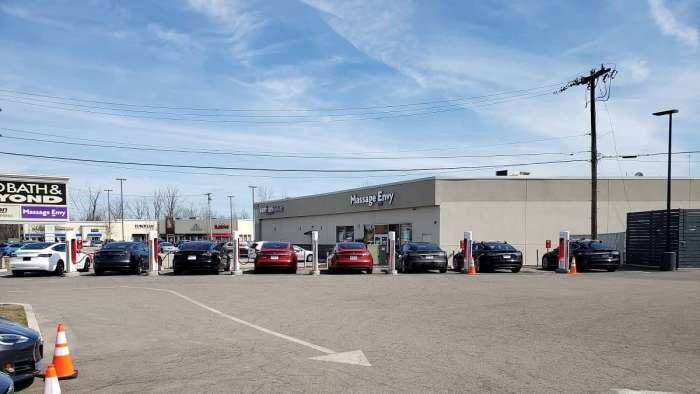
Tesla’s Model Is Much Better
If you own a Tesla in America, you have access to a private network of Superchargers. These are much better than the DCFC public chargers in almost all meaningful ways. Faster for the most part, more plentiful, better located, and they are just for you. The unwashed masses can’t use them. Bolts, Leafs, Niros, Ioniq 5s, Hummers, Fisker Karmas, BMW i8s, Audi e-Tron GTs, you name it, are all excluded. Just Tesla owners can use these fast chargers. You get the best private charging network in the world when you buy a Tesla. With other brands, you get the public network.
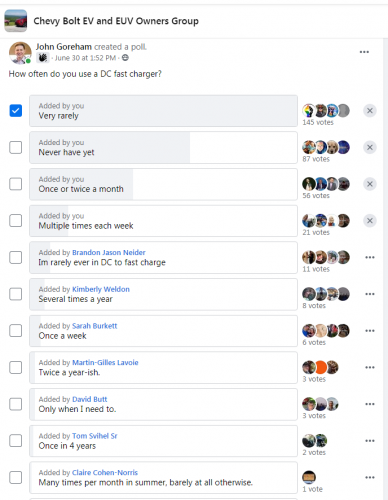
The Future of Charging
The present of EV charging is mostly at-home charging for owners of everything except a Tesla. We polled Chevy Bolt owners and almost none say they use DC fast chargers. One of the top-selling vehicles with a plug for 2021 was the Toyota RAV4 Prime. It outsold every battery-electric crossover in its price range. But the RAV4 Prime can’t use DC fast chargers. Today’s situation can change. If new, plentiful, much faster DC fast chargers become widespread faster than EVs earn market share, the public charger network could be much more practical to use. If EV adoption outpaces the added infrastructure, charging in public could be less feasible than today.
Tell Us What You Think
Which future be realized? Tell us in the comments below what you think the future of fast charging in public will be.
Helpful Facts:
The watt is an SI unit of power (symbol: W). The watt unit is named after inventor/scientist James Watt, known for inventing the external combustion steam engine. Isn't it a little bit ironic that EV charger units relate back to coal-fired engines?
If you want to calculate the watts from a power source simply multiply volts x amps. For example, a 16 amp circuit operating at 230 volts provides 3,680 watts or 3.68 kW (kilowatts). Fun fact: This is what the author's home charger provides and it works perfectly for overnight EV charging.
kWh are kilowatt-hours. This is a common way to describe the energy capacity of a battery. For example, a 100 kWh battery would be able to provide 100kW of power for an hour. Or it could provide 1 kW for 100 hours.
Here is how to capitalize watts (W) correctly when using the unit.
Suggested Reading On This Topic From Other Publications:
Everything you've always wanted to know about fast charging
How It Works: Making sense of EV specifications
Electric vehicle (EV) charging standards and how they differ
Image of Chevy Bolt charging at EVGo DCFC by John Goreham. Image of EV charger map courtesy of Google Maps. Image of Superchargers in use by John Goreham. Image of poll results courtesy of Facebook and John Goreham.
John Goreham is a long-time New England Motor Press Association member and recovering engineer. John's interest in EVs goes back to 1990 when he designed the thermal control system for an EV battery as part of an academic team. After earning his mechanical engineering degree, John completed a marketing program at Northeastern University and worked with automotive component manufacturers, in the semiconductor industry, and in biotech. In addition to Torque News, John's work has appeared in print in dozens of American news outlets and he provides reviews to many vehicle shopping sites. You can follow John on TikTok @ToknCars, on Twitter, and view his credentials at Linkedin
Re-Publication. If you wish to re-use this content, please contact Torque News for terms and conditions.








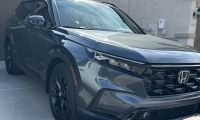
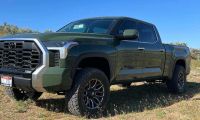
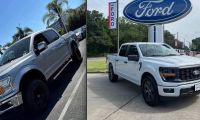
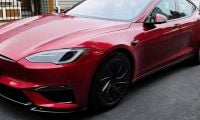

Comments
I don't get your persistent
Permalink
I don't get your persistent negative spin here. It's like giant straw man arguments. No one claims that charging is at parity with gas fill ups, yet you keep writing like your debunking that claim.
BEVs are not yet a universal replacement for ICE vehicles. ICE vehicles have a 130year head start and is a mature industry with mature infrastructure. BEVs are in their infancy and day by day are effective replacements for ICE vehicles. For most drivers, the only use case they fall short is long distance driving. In fact, if one has at home charging, one no longer gives that weekly 10 min time at the gas station! Thats about six hours of ones life to spend on other things, like writing replies to the negative slant in these articles!
If one looked at the percentage of US driving needs that BEVs can cover, it's an increasing amount every month. Not yet at 100%.
Here in CA gas is around $5 a gallon. Even if I pay 20 cents a kWH on average, less at home, more at charging stations, that's a price equivalency of 80+ mpg!
So, I save time, I save money but I have to plan for more time on long drives because charging infrastructure is in it's infancy. For a few people, this is a barrier to adoption. For almost everyone else, it's a net win.
My family has about 90,000 all electric miles under our belt. We've eliminated multiple weekly gas station stops. We've saved money. We've lowered out carbon footprint significantly. And just once in the last year did I have to add time to a long distance trip due to limited access to charging infrastructure.
Yet the tone of your articles is that the technology isn't ready, charging stations are worthless and that this whole effort is oversold. All because you seem to insist on focusing mostly on problematic use cases.
Thanks, Matt. In fairness, I
Permalink
In reply to I don't get your persistent by MattR (not verified)
Thanks, Matt. In fairness, I do a lot of EV writing. Some of it is less debunking and more ..bunking? Why am I getting the sneaking suspicion you are sitting at an EV charger when you create your comments? :) Kidding aside, I am glad you offered this comment. It provides an excellent very positive viewpoint not mentioned in the story.